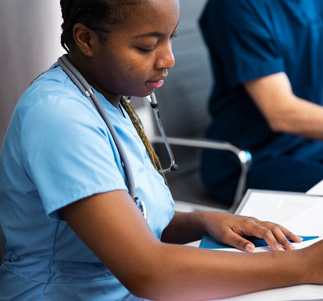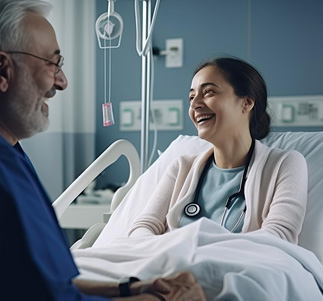Ovarian rejuvenation is an innovative (and experimental) approach designed to enhance ovarian function, particularly in women with diminished ovarian reserve (DOR), premature menopause, or other fertility challenges. The procedure involves using various techniques to stimulate the ovaries to produce more eggs, improve egg quality, or restore hormonal balance. At our clinic, we employ three ovarian rejuvenation techniques: PRP (Platelet-Rich Plasma) therapy, Exosome therapy, and Mechanical Trauma.
PRP therapy involves drawing a small amount of the patient’s blood, processing it to concentrate the platelets, and then injecting the platelet-rich plasma into the ovaries. The platelets are rich in growth factors that promote tissue repair and regeneration, enhance the quantity and quality of eggs. This approach may improve fertility in women with poor ovarian reserve or poor ovarian response.
Exosome therapy utilizes small, membrane-bound particles released by cells, which carry proteins, lipids, RNA, and other signaling molecules. These exosomes play a crucial role in various biological processes, including tissue regeneration, immune responses, and cellular communication. In ovarian rejuvenation, exosomes are explored for their potential to restore or boost ovarian function. By influencing the ovarian microenvironment, exosomes may promote the development and quality of follicles (which contain eggs). Stem cell-derived exosomes, in particular, show promise in increasing ovarian reserve and restoring normal ovarian function by optimizing the ovarian environment, reducing oxidative stress, and improving cellular communication. This could result in healthier eggs that are more likely to lead to successful pregnancies.
Ovarian mechanical trauma involves puncturing the ovarian tissue with a thin needle to stimulate the ovarian environment and potentially improve fertility in women with diminished ovarian reserve or premature ovarian insufficiency.. The idea is that controlled trauma can activate dormant follicles, improve ovarian function and increase blood flow, creating a better environment for egg development. The procedure is minimally invasive and is usually performed hysteroscopically. It is combined with other treatments such as PRP or exosomes to enhance its effects.
Before undergoing ovarian rejuvenation, patients receive a thorough evaluation, including AMH and FSH level assessments, an antral follicle count (AFC), and a review of their medical history to confirm the procedure’s suitability. The procedure, performed under sedation in the operating room, typically lasts 15-20 minutes. Afterward, patients are monitored for a few hours before being discharged. Two months later, follow-up assessments of follicle counts and hormone levels are conducted to evaluate the treatment’s effectiveness.
Ovarian rejuvenation is promising development in the field of fertility treatment. While still in the experimental stage, this innovative approach holds significant promise for women who have struggled with infertility due to diminished ovarian reserve, premature menopause, or other reproductive challenges. By aiming to enhance ovarian function and improve egg quality, ovarian rejuvenation could potentially open new doors for women who previously had limited options for achieving pregnancy.



